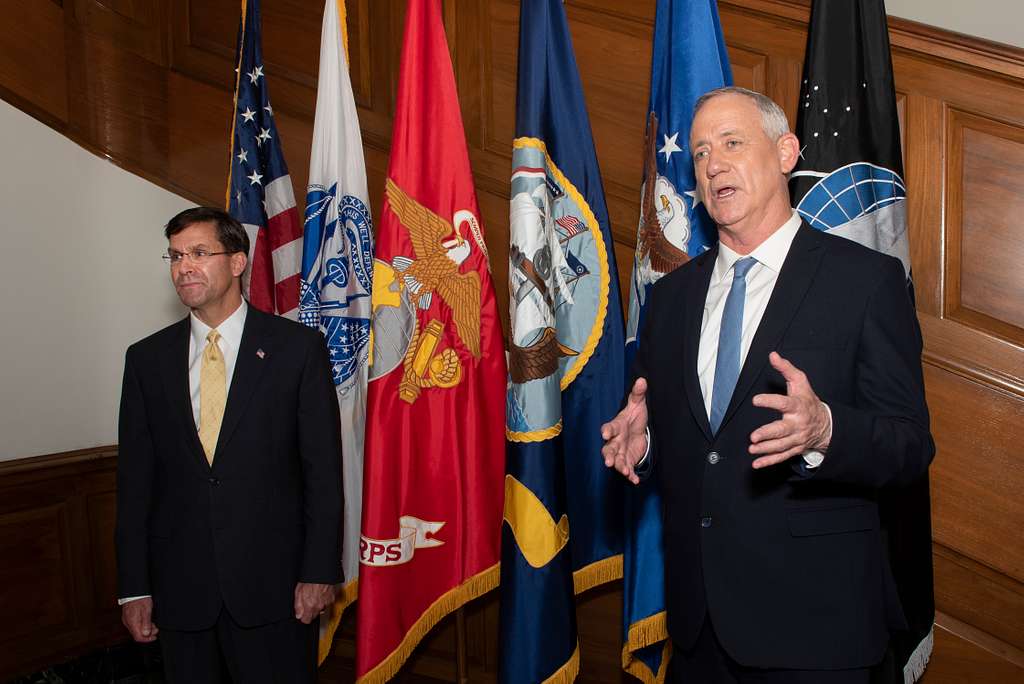Joe Biden is the first incumbent president to face off against a member of the previous presidential administration since 1984, when President Ronald Reagan beat former Vice President Walter Mondale in a landslide.
While there are plenty of differences between today and 40 years ago, there are important similarities—chiefly, an economy that’s much better than the one four years prior. That’s why earlier this month, I argued that Biden’s marketing team should emulate Reagan’s famously optimistic television ad campaign known as “Morning in America.”
But Reagan’s communications strategy was not all positive. His ad makers also took direct aim at the record of his predecessor. The political logic was straightforward. Reagan won in 1980 with the argument that people were not better off after four years of Jimmy Carter and Mondale. As his own four years were not without problems, he had to make sure his record would be judged in comparison to the worst possible characterization of his predecessor.
Biden has the same challenge today. His media team should draw inspiration from Reagan’s negative spots, and craft a parallel “Nightmare in America” narrative of Donald Trump’s time in office.
“Morning in America” featured a gentle, nameless narrator and soft piano music over heartwarming scenes of American family and work life. “Inflation” used similar music, but had Reagan himself narrating over scenes of an idled economy.
“This was America in 1980: a nation that wasn’t working,” Reagan reminded viewers. “Huge government spending gave us the worst inflation in 65 years. Interest rates were at an all-time high. The elderly were being priced out of their homes, and people were losing faith in the America dream.”
Reagan then pivots, crediting a collective effort of the American people for the turnaround: “We rolled up our sleeves and showed that working together, there’s nothing we Americans can’t do. Today, the inflation is down, interest rates are down. We’ve created six and half million new jobs. Americans are working again, and so is America.” As Reagan seeks to soothe his audience, images of a happy America similar to what’s in the “Morning in America” spot grace the screen.
Another ad, “Foreign Policy,” begins with the jarring image of a burning America flag, following by chanting Iranian protestors, invoking the hostage crisis that bedeviled Jimmy Carter for months. “This was America in 1980: held in contempt by foreign nations. Across the world, people were losing their freedoms. So many countries thought America had seen its day. But we knew better. So we stopped complaining together, and starting working together. Today, America is strong again.”
If Biden were to do an ad that began with him saying, “This was America in 2020,” what would come next? Your first thought might be: the Covid-19 pandemic. But while footage of Trump suggesting we inject ourselves with bleach would be a useful reminder of the insanity of his response, centering the pandemic risks a painful relitigating of the value of lockdowns and masks. That’s not the turf on which Biden wants to battle.
What else happened in 2020 that was disruptive? Widespread riots.
You might think: why should Biden talk about that? Back then, Trump and other Republicans used the riots to pillory “Democrat-run cities” for descending into anarchy following the homicide of the African-American George Floyd by a white police officer.
But four years later, most cities are still run by Democrats. And while all cities always have their problems, none of them are currently burning.
The Reagan ad campaign was a masterclass in storytelling. And there is a story to tell today, one that begins with the story Biden told in his April 2019 presidential campaign announcement video about the 2017 white nationalist rally in Charlottesville, Virginia: “[Trump] said there were, quote, ‘some very fine people on both sides’ … the President of the United States assigned a moral equivalence between those spreading hate and those with the courage to stand against it. And in that moment, I knew that the threat to this nation was unlike any I had ever seen in my lifetime.”
Trump began his presidency sowing division among Americans, and he never stopped. Following the chaotic summer of 2020, we held an election, which Trump lost. Yet his commitment to sowing division only deepened, leading him to instigate the riot to end all riots: a bona fide insurrection of the United States Capitol to steal the election and subvert American democracy.
As Reagan portrayed an America of recent past marked by inflation and declining global influence, Biden could narrate an ad over a montage of riots from both the summer of 2020 and the January 6 insurrection:
This was America in 2020: literally on fire. After four years of a president spewing hatred toward business leaders, soldiers, athletes, immigrants, people of different faiths, political opponents, even at times political allies, our country was falling apart. We were turning on each other, and democracy itself hung by a thread.
Then just like Reagan, Biden can pivot. Over multicultural scenes of cooperative workers and happy families, Biden could say:
But then we rediscovered the love of democracy that binds us as a nation. We found ways to bridge our differences and rebuild our economy after the pandemic. We have more work to do, but compared to four years ago, America is stronger, safer, and kinder.
For a story to resonate it needs to not just be true, but feel true. That Trump is a divisive person who divided America meets both criteria. Many of Trump’s own supporters acknowledge it, to either lament or revel in it. Whatever divisions presently remain, after the last 37 months of calm, moral leadership, the national temperature has indisputably simmered. An ad campaign that ties Trump’s hateful approach to politics to the 2020 unrest is not going to fail any fact checks.
Another potential ad for Biden would emulate one of the most famous ads of the 1984 Reagan re-election campaign, “Bear.” Over an intensifying drum beat, a bear lumbers in the wild. The bear symbolizes the Communist Soviet Union, but that is never said outright, nor is any candidate’s name. The same narrator from “Morning in America” (famed adman Hal Riney) gravely but assuredly says:
There is a bear in the woods. For some people, the bear is easy to see. Others don’t see it at all.
Some people say the bear is tame. Others say it’s vicious and dangerous.
Since no one can really be sure who’s right, isn’t it smart to be as strong as the bear? If there is a bear?
The final frame shows the bear, after noticing a hunter directly in its path, stepping back. (The original storyboard envisioned the hunter pointing a gun at the bear, but a Reagan aide told Germond and Witcover that the owner of the trained bear used in the ad wouldn’t allow it.) Only then does the ad show Reagan’s image, silently, with the slogan “Prepared for Peace.”
One of most unusual presidential campaign ads of all time, “Bear” was not part of the upbeat “Morning in America” rollout that kicked off the fall campaign. According to the book Wake Us When It’s Over by Jack Germond and Jules Witcover, the ad was shot in the spring and shown to focus groups. It received “higher rates on approval and recall … than any other television commercial ever made,” but it wasn’t rushed to air. Reagan’s team “saved it for when it might really be needed.”
That time was after Reagan’s wobbly debate performance on October 7, which prompted questions about Reagan’s age and cognition. One Mondale aide privately confessed to the Washington Post that the ad successfully assuaged public concerns about Reagan’s hardline approach to the Cold War, providing, “a soft, easy way for them to talk about a tough problem.”
By speaking obliquely, the ad gets away with a strawman argument. Mondale never argued that the Soviet Union was tame. Technically, the narrator didn’t say otherwise. But Mondale advocated for a robust pursuit of a nuclear arms control agreement and proposed military spending cuts. To suggest that Mondale wasn’t taking the Soviet threat as seriously as Reagan felt true.
Forty years later, it just so happens that American foreign policy towards Russia is once again a major flashpoint between the two major party presidential candidates. Why not produce “Bear 2.0”?
As Russia today is in open warfare with Ukraine and threatening the stability of our NATO alliance, such an ad need not be as coy, and no strawman argument is necessary. For example, over footage of an angrier bear thrashing about, a narrator could say:
There is a bear in the woods. For some people, the bear is easy to see. Others refuse to see it at all.
Some people like that the bear is smart and powerful. Others warn that the bear is on the loose, hurting and threatening our friends.
At this point the bear could again spot a hunter and stop in its tracks. The narrator could conclude:
Since we can already see what the bear is doing, isn’t it smart to stop the bear? Since, there is a bear?
The job of a re-election campaign is to affirmatively answer the succinct question Reagan posed as a challenger in 1980, “Are you better off than you were four years ago?” And when your opponent is from the administration you defeated, you have the complementary task of reminding voters how bad things were four years ago.
This can be harder than it looks, because no presidential term is without hiccups, the past can be romanticized in comparison to the present, and an around-the-clock media environment steadily pumps the discourse full of negativity.
But Biden has a straightforward argument to make. We are better off economically than we were four years ago, and his predecessor’s record is decidedly unromantic. Morning in America will beat Nightmare in America.
Related


















